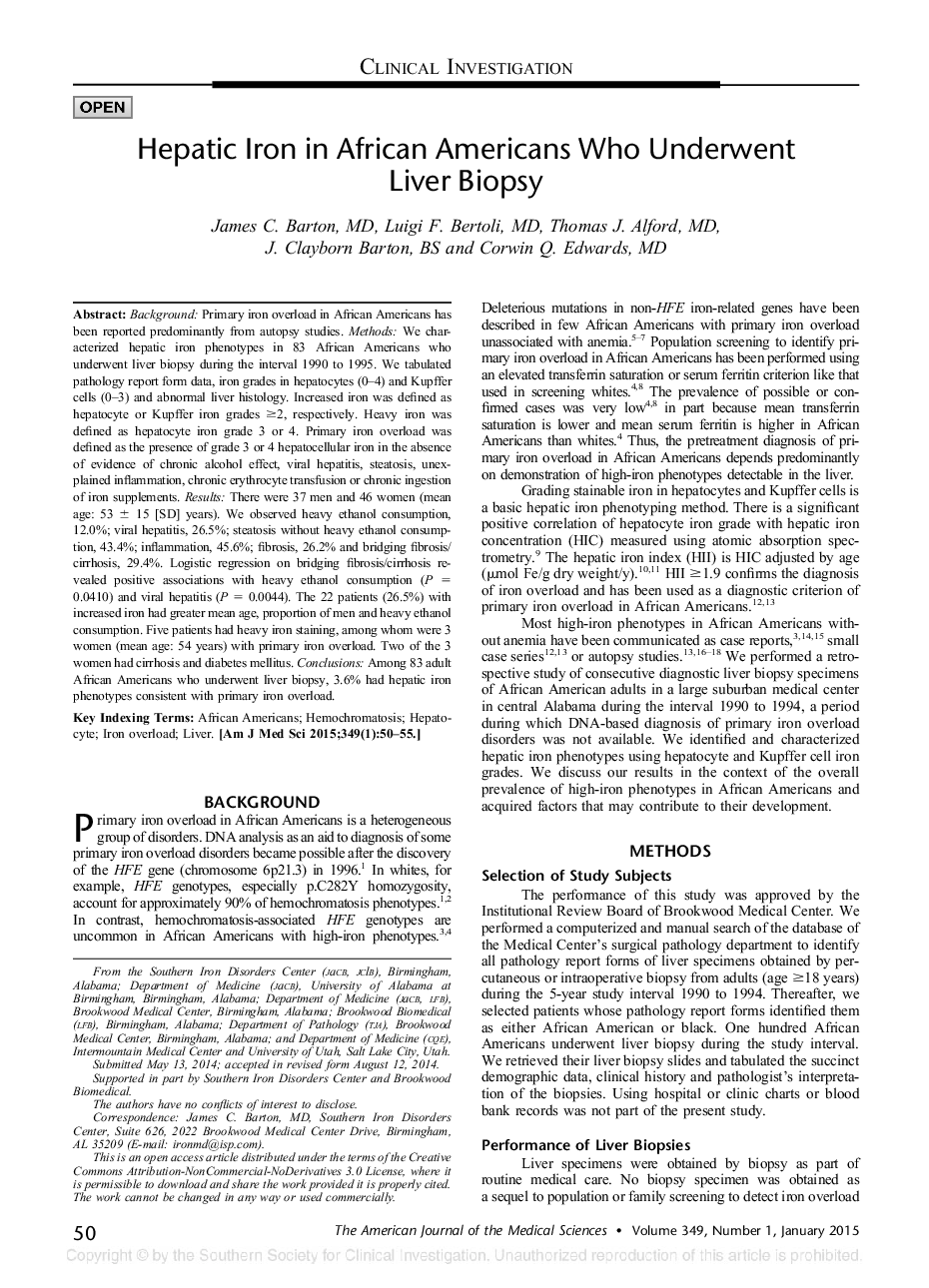| Article ID | Journal | Published Year | Pages | File Type |
|---|---|---|---|---|
| 5931798 | The American Journal of the Medical Sciences | 2015 | 6 Pages |
BackgroundPrimary iron overload in African Americans has been reported predominantly from autopsy studies.MethodsWe characterized hepatic iron phenotypes in 83 African Americans who underwent liver biopsy during the interval 1990 to 1995. We tabulated pathology report form data, iron grades in hepatocytes (0-4) and Kupffer cells (0-3) and abnormal liver histology. Increased iron was defined as hepatocyte or Kupffer iron grades â¥Â 2, respectively. Heavy iron was defined as hepatocyte iron grade 3 or 4. Primary iron overload was defined as the presence of grade 3 or 4 hepatocellular iron in the absence of evidence of chronic alcohol effect, viral hepatitis, steatosis, unexplained inflammation, chronic erythrocyte transfusion or chronic ingestion of iron supplements.ResultsThere were 37 men and 46 women (mean age: 53 ± 15 [SD] years). We observed heavy ethanol consumption, 12.0%; viral hepatitis, 26.5%; steatosis without heavy ethanol consumption, 43.4%; inflammation, 45.6%; fibrosis, 26.2% and bridging fibrosis/ cirrhosis, 29.4%. Logistic regression on bridging fibrosis/cirrhosis revealed positive associations with heavy ethanol consumption (P = 0.0410) and viral hepatitis (P = 0.0044). The 22 patients (26.5%) with increased iron had greater mean age, proportion of men and heavy ethanol consumption. Five patients had heavy iron staining, among whom were 3 women (mean age: 54 years) with primary iron overload. Two of the 3 women had cirrhosis and diabetes mellitus.ConclusionsAmong 83 adult African Americans who underwent liver biopsy, 3.6% had hepatic iron phenotypes consistent with primary iron overload.
